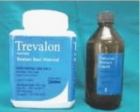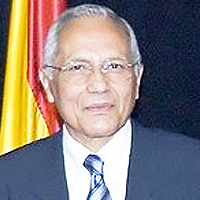Abstract
Research Article
Neonatal Mortality Rate among Twin and Singleton Births with the Gestational Age of 34-37 Weeks: A Population-Based Study
Sedigheh Hantoushzadeh, Kayvan Mirnia, Hananeh Sadat Sadeghi, Parvaneh Sadeghimoghadam*, Mohammad Aghaali, Mohammad Heidarzadeh, Abbas Habibelahi, Shima Rafiee, Mohammad Haddadi and Amir Naddaf
Published: 28 June, 2023 | Volume 6 - Issue 2 | Pages: 088-094
Introduction: Twin pregnancy, compared to a singleton pregnancy, is associated with a higher risk of preterm birth and other neonatal complications. This study aimed to compare neonatal mortality rates and risk factors among births with the gestational age of 34 weeks - 37 weeks in twin and singleton pregnancies.
Methods: The study design was cross-sectional and population-based. We extracted the data from the birth information registry in Iran. Mothers' and neonates' information was removed from the registry systems between 2018 and 2020. We used Statistical R software to compare neonatal mortality rate, demographic variables, and risk factors between two groups of twin and singleton neonates.
Results: Out of 579,873 live births with a gestational age of 34 weeks - 37 weeks, 729 (1.4/1000) singleton and 54(0.77/1000) twins (one out of two) neonates died in the delivery room in the first hour of life. Of the neonates who left the delivery room alive, 3129 (4.9 per 1000) neonates had died (5.7/1000 singleton and 3.04/1000 twin). The neonatal mortality rate in hospitalized singleton neonates (1.85%) was higher than twin group (1.06%). After adjustment of other variables, the mortality rate in twin pregnancy was significantly lower than in singletons (p value < 1/1000), with an odds ratio of 0.47 (CI: 0.39 - 0.55). Antenatal corticosteroid treatment in the twin group was significantly higher than in singletons.
Conclusion: Twin neonatal mortality rate was lower than singletons in the neonates with gestational age 34 weeks - 37 weeks. Clinicians could consider these results for delivery timing in uncomplicated twin pregnancies. Antenatal corticosteroid therapy can be considered to reduce the mortality rate of late preterm neonates in resource-limited countries.
Read Full Article HTML DOI: 10.29328/journal.cjog.1001134 Cite this Article Read Full Article PDF
Keywords:
Twins; Perinatal mortality; Risk factors; Cesarean section; Premature birth
References
- Esposito G, Dalmartello M, Franchi M, Mauri PA, Cipriani S, Corrao G, Parazzini F. Trends in Dizygotic and Monozygotic Spontaneous Twin Births During the Period 2007-2017 in Lombardy, Northern Italy: A Population-Based Study. Twin Res Hum Genet. 2022 Jun;25(3):149-155. doi: 10.1017/thg.2022.19. Epub 2022 Jun 29. PMID: 35765814.
- Dawson AL, Tinker SC, Jamieson DJ, Hobbs CA, Rasmussen SA, Reefhuis J; National Birth Defects Prevention Study. Epidemiology of twinning in the National Birth Defects Prevention Study, 1997 to 2007. Birth Defects Res A Clin Mol Teratol. 2015 Feb;103(2):85-99. doi: 10.1002/bdra.23325. Epub 2014 Oct 31. PMID: 25359509; PMCID: PMC4382674.
- Yazdekhasti A, Firouzfar A, Hajheidari P, Havaei A, Tavakol G, Karbasian F. Prevalence of multiple birth in Isfahan, Iran. J Res Med Sci. 2018 Mar 27;23:25. doi: 10.4103/jrms.JRMS_892_16. PMID: 29692822; PMCID: PMC5894274.
- Cho GJ, Cho KD, Kim HY, Ha S, Oh MJ, Won HS, Chung JH. Short-term neonatal and long-term infant outcome of late-preterm twins: nationwide population-based study. Ultrasound Obstet Gynecol. 2022 Jun;59(6):763-770. doi: 10.1002/uog.24838. PMID: 34931725.
- Ray B, Platt MP. Mortality of twin and singleton livebirths under 30 weeks' gestation: a population-based study. Arch Dis Child Fetal Neonatal Ed. 2009 Mar;94(2):F140-3. doi: 10.1136/adc.2008.143016. Epub 2008 Oct 6. PMID: 18838469.
- Asztalos E, Barrett JF, Lacy M, Luther M. Evaluating 2 year outcome in twins < or = 30 weeks gestation at birth: a regional perinatal unit's experience. Twin Res. 2001 Dec;4(6):431-8. doi: 10.1375/1369052012759. PMID: 11780934.
- Synnes AR, Ling EW, Whitfield MF, Mackinnon M, Lopes L, Wong G, Effer SB. Perinatal outcomes of a large cohort of extremely low gestational age infants (twenty-three to twenty-eight completed weeks of gestation). J Pediatr. 1994 Dec;125(6 Pt 1):952-60. doi: 10.1016/s0022-3476(05)82015-3. PMID: 7996370.
- Khatibi T, Kheyrikoochaksarayee N, Sepehri MM. Analysis of big data for prediction of provider-initiated preterm birth and spontaneous premature deliveries and ranking the predictive features. Arch Gynecol Obstet. 2019 Dec;300(6):1565-1582. doi: 10.1007/s00404-019-05325-3. Epub 2019 Oct 24. PMID: 31650230.
- Pourshirazi M, Heidarzadeh M, Taheri M, Esmaily H, Babaey F, Talkhi N, Gholizadeh L. Cesarean delivery in Iran: a population-based analysis using the Robson classification system. BMC Pregnancy Childbirth. 2022 Mar 8;22(1):185. doi: 10.1186/s12884-022-04517-1. PMID: 35260106; PMCID: PMC8903666.
- Esposito G, Dalmartello M, Franchi M, Mauri PA, Cipriani S, Corrao G, Parazzini F. Trends in Dizygotic and Monozygotic Spontaneous Twin Births During the Period 2007-2017 in Lombardy, Northern Italy: A Population-Based Study. Twin Res Hum Genet. 2022 Jun;25(3):149-155. doi: 10.1017/thg.2022.19. Epub 2022 Jun 29. PMID: 35765814.
- Ananth CV, Friedman AM, Gyamfi-Bannerman C. Epidemiology of moderate preterm, late preterm and early term delivery. Clin Perinatol. 2013 Dec;40(4):601-10. doi: 10.1016/j.clp.2013.07.001. Epub 2013 Sep 20. PMID: 24182950.
- Nagasaka M, Morioka I, Yokota T, Fujita K, Kurokawa D, Koda T, Shibata A, Yamada H, Ito Y, Uchino E, Shirai C, Iijima K. Incidence of short stature at 3 years of age in late preterm infants: a population-based study. Arch Dis Child. 2015 Mar;100(3):250-4. doi: 10.1136/archdischild-2014-307045. Epub 2014 Sep 26. PMID: 25260516.
- Dimitriou G, Fouzas S, Georgakis V, Vervenioti A, Papadopoulos VG, Decavalas G, Mantagos S. Determinants of morbidity in late preterm infants. Early Hum Dev. 2010 Sep;86(9):587-91. doi: 10.1016/j.earlhumdev.2010.07.011. Epub 2010 Aug 21. PMID: 20729014.
- King JP, Gazmararian JA, Shapiro-Mendoza CK. Disparities in mortality rates among US infants born late preterm or early term, 2003-2005. Matern Child Health J. 2014 Jan;18(1):233-241. doi: 10.1007/s10995-013-1259-0. PMID: 23519825; PMCID: PMC4407273.
- Ward C, Caughey AB. Late preterm births: neonatal mortality and morbidity in twins vs. singletons. J Matern Fetal Neonatal Med. 2022 Dec;35(25):7962-7967. doi: 10.1080/14767058.2021.1939303. Epub 2021 Jun 21. PMID: 34154507.
- Martinka D, Barrett J, Mei-Dan E, Zaltz A, Melamed N. Respiratory morbidity in late preterm twin infants. Arch Gynecol Obstet. 2019 Aug;300(2):337-345. doi: 10.1007/s00404-019-05191-z. Epub 2019 May 15. PMID: 31093740.
- Refuerzo JS, Momirova V, Peaceman AM, Sciscione A, Rouse DJ, Caritis SN, Spong CY, Varner MW, Malone FD, Iams JD, Mercer BM, Thorp JM Jr, Sorokin Y, Carpenter MW, Lo J, Harper M; Eunice Kennedy Shriver National Institute of Child Health and Human Development Maternal-Fetal Medicine Units Network. Neonatal outcomes in twin pregnancies delivered moderately preterm, late preterm, and term. Am J Perinatol. 2010 Aug;27(7):537-42. doi: 10.1055/s-0030-1248940. Epub 2010 Feb 19. PMID: 20175042; PMCID: PMC2990398.
- Vachharajani AJ, Vachharajani NA, Dawson JG. Comparison of short-term outcomes of late preterm singletons and multiple births: an institutional experience. Clin Pediatr (Phila). 2009 Nov;48(9):922-5. doi: 10.1177/0009922809336359. Epub 2009 May 29. PMID: 19483134.
- Suzuki S, Inde Y, Miyake H. Comparison of short-term outcomes of late pre-term singletons and dichorionic twins and optimal timing of delivery. J Obstet Gynaecol. 2010;30(6):574-7. doi: 10.3109/01443615.2010.494207. PMID: 20701505.
- Zdanowicz JA, Sommer E, Raio L, Nelle M, Gerull R. Do late preterm twins face an increased neonatal morbidity compared with singletons? Swiss Med Wkly. 2018 Jan 4;148:w14581. doi: 10.4414/smw.2018.14581. PMID: 29376553.
- Ribicic R, Kranjcec I, Borosak J, Tumbri J, Mihovilovic Prajz L, Ribicic T. Perinatal outcome of singleton versus twin late preterm infants: do twins mature faster than singletons? J Matern Fetal Neonatal Med. 2016;29(9):1520-4. doi: 10.3109/14767058.2015.1053449. Epub 2015 Jun 24. PMID: 26103779.
- Yoo EH, Chun D, Kim MJ, Cha HH, Seong WJ. Comparison of perinatal outcomes in late preterm birth between singleton and twin pregnancies. Obstet Gynecol Sci. 2017 Sep;60(5):421-426. doi: 10.5468/ogs.2017.60.5.421. Epub 2017 Sep 18. PMID: 28989917; PMCID: PMC5621070.
- Garite TJ, Clark RH, Elliott JP, Thorp JA. Twins and triplets: the effect of plurality and growth on neonatal outcome compared with singleton infants. Am J Obstet Gynecol. 2004 Sep;191(3):700-7. doi: 10.1016/j.ajog.2004.03.040. Erratum in: Am J Obstet Gynecol. 2004 Dec;191(6):2184. PMID: 15467528.
- Kaufman GE, Malone FD, Harvey-Wilkes KB, Chelmow D, Penzias AS, D'Alton ME. Neonatal morbidity and mortality associated with triplet pregnancy. Obstet Gynecol. 1998 Mar;91(3):342-8. doi: 10.1016/s0029-7844(97)00686-8. PMID: 9491857.
- Hedriana HL, Eby-Wilkens EM, Gilbert WM. Perinatal mortality and morbidity rates among singleton, twin, and triplet gestations. Prim Care Update Ob Gyns. 1998 Jul 1;5(4):184. doi: 10.1016/s1068-607x(98)00099-7. PMID: 10838344.
- Vasak B, Verhagen JJ, Koenen SV, Koster MP, de Reu PA, Franx A, Nijhuis JG, Bonsel GJ, Visser GH. Lower perinatal mortality in preterm born twins than in singletons: a nationwide study from The Netherlands. Am J Obstet Gynecol. 2017 Feb;216(2):161.e1-161.e9. doi: 10.1016/j.ajog.2016.10.005. Epub 2016 Oct 8. PMID: 27729252.
- Gyamfi-Bannerman C, Gilbert S, Landon MB, Spong CY, Rouse DJ, Varner MW, Meis PJ, Wapner RJ, Sorokin Y, Carpenter M, Peaceman AM, O'Sullivan MJ, Sibai BM, Thorp JM, Ramin SM, Mercer BM; Eunice Kennedy Shriver National Institute of Child Health; Human Development (NICHD) Maternal-Fetal Medicine Units Network (MFMU). Effect of antenatal corticosteroids on respiratory morbidity in singletons after late-preterm birth. Obstet Gynecol. 2012 Mar;119(3):555-9. doi: 10.1097/AOG.0b013e31824758f6. PMID: 22353953; PMCID: PMC3338333.
- Tsuda H, Hirakawa A, Kotani T, Sumigama S, Mano Y, Nakano T, Imai K, Kawabata I, Takahashi Y, Iwagaki S, Kikkawa F. Risk assessment for neonatal RDS/TTN using gestational age and the amniotic lamellar body count in twin pregnancies. Clin Chim Acta. 2015 Dec 7;451(Pt B):301-4. doi: 10.1016/j.cca.2015.10.013. Epub 2015 Oct 20. PMID: 26477481.
- Tsuda H, Kotani T, Nakano T, Imai K, Ushida T, Hirakawa A, Kinoshita F, Takahashi Y, Iwagaki S, Kikkawa F. The rate of neonatal respiratory distress syndrome/transient tachypnea in the newborn and the amniotic lamellar body count in twin pregnancies compared with singleton pregnancies. Clin Chim Acta. 2018 Sep;484:293-297. doi: 10.1016/j.cca.2018.06.015. Epub 2018 Jun 9. PMID: 29894780.
- Cheong-See F, Schuit E, Arroyo-Manzano D, Khalil A, Barrett J, Joseph KS, Asztalos E, Hack K, Lewi L, Lim A, Liem S, Norman JE, Morrison J, Combs CA, Garite TJ, Maurel K, Serra V, Perales A, Rode L, Worda K, Nassar A, Aboulghar M, Rouse D, Thom E, Breathnach F, Nakayama S, Russo FM, Robinson JN, Dodd JM, Newman RB, Bhattacharya S, Tang S, Mol BW, Zamora J, Thilaganathan B, Thangaratinam S; Global Obstetrics Network (GONet) Collaboration. Prospective risk of stillbirth and neonatal complications in twin pregnancies: systematic review and meta-analysis. BMJ. 2016 Sep 6;354:i4353. doi: 10.1136/bmj.i4353. PMID: 27599496; PMCID: PMC5013231.
- Htun ZT, Hairston JC, Gyamfi-Bannerman C, Marasch J, Duarte Ribeiro AP. Antenatal Corticosteroids: Extending the Practice for Late-Preterm and Scheduled Early-Term Deliveries? Children (Basel). 2021 Apr 1;8(4):272. doi: 10.3390/children8040272. PMID: 33916116; PMCID: PMC8066880.
- Vieira LA, Kao YH, Tsevdos DS, Lau YK, Wang Z, Li S, Zheutlin AB, Gross SJ, Stone JL, Dolan SM, Schadt EE, Li L. Late preterm antenatal corticosteroids in singleton and twin gestations: a retrospective cohort study. BMC Pregnancy Childbirth. 2022 Dec 5;22(1):904. doi: 10.1186/s12884-022-05262-1. PMID: 36471280; PMCID: PMC9721054.
- Hong S, Lee SM, Kwak DW, Lee J, Kim SY, Oh JW, Jun JK. Effects of antenatal corticosteroids in twin neonates with late preterm birth (ACTWIN [Antenatal Corticosteroids in TWIN late preterm neonates] trial): study protocol for a randomized controlled trial. BMC pregnancy and childbirth. 2019; 19:1-6h.
- Murray S, MacKay D, Stock S, Pell J, Norman J. Association of Gestational Age at Birth With Risk of Perinatal Mortality and Special Educational Need Among Twins. JAMA Pediatr. 2020 May 1;174(5):437-445. doi: 10.1001/jamapediatrics.2019.6317. PMID: 32150231; PMCID: PMC7063542.
- Khalil A. Unprecedented fall in stillbirth and neonatal death in twins: lessons from the UK. Ultrasound Obstet Gynecol. 2019 Feb;53(2):153-157. doi: 10.1002/uog.20107. PMID: 30152183.
Figures:
Similar Articles
-
Screening of Gestational diabetes mellitusGehan Farid*,Sarah Rabie Ali*,Reem Mohammed Kamal. Screening of Gestational diabetes mellitus . . 2018 doi: 10.29328/journal.cjog.1001003; 1: 014-023
-
Perinatal Morbidity & Mortality following repeat Cesarean section due to five or more previous Cesarean Section done in Tertiary centre in KSASomia Osman,Gehan Farid*,Reem Mohamed Kamal,Sarah Rabie Ali,Mohamed AH Swaraldahab. Perinatal Morbidity & Mortality following repeat Cesarean section due to five or more previous Cesarean Section done in Tertiary centre in KSA. . 2018 doi: 10.29328/journal.cjog.1001007; 1: 045-051
-
Current anesthesıa for Cesarean SectıonDemet Dogan Erol*, Ismail Aytac. Current anesthesıa for Cesarean Sectıon. . 2018 doi: 10.29328/journal.cjog.1001011; 1: 061-066
-
Immediate postplacental insertion of intrauterine contraceptive device (copper 375) and its complications in term of expulsion, infection and perforationBenish Khanzada*,Mala Jitendra Shahani,Areesha Kamran Khanzada. Immediate postplacental insertion of intrauterine contraceptive device (copper 375) and its complications in term of expulsion, infection and perforation . . 2018 doi: 10.29328/journal.cjog.1001014; 1: 082-086
-
Maternal mortality and factors affecting it, among pregnant women in Abeokuta South, NigeriaTumilara Busayo Amoo*,Oyinkansola Sarah Ajayi. Maternal mortality and factors affecting it, among pregnant women in Abeokuta South, Nigeria. . 2019 doi: 10.29328/journal.cjog.1001025; 2: 071-078
-
Previous antibiotic treatment as a risk factor for recurrent vulvovaginal candidiasisWen Yang#,You Nie#,Shujuan Wang,Hongwei Wang,Enfeng Zhao,Na Dou*. Previous antibiotic treatment as a risk factor for recurrent vulvovaginal candidiasis. . 2019 doi: 10.29328/journal.cjog.1001034; 2: 127-132
-
Snake envenomation during pregnancyDenisse G Martinez,Newton G Osborne*. Snake envenomation during pregnancy. . 2019 doi: 10.29328/journal.cjog.1001039; 2: 150-155
-
Trial of labor after cesarean outcomes with excessive gestational weight gainSophia Halassy*,Angela Marras. Trial of labor after cesarean outcomes with excessive gestational weight gain. . 2020 doi: 10.29328/journal.cjog.1001048; 3: 039-042
-
Curettage is a risk factor for marginal umbilical cord insertionElie Nkwabong*,Simon Junior Mabol Mbeleck,Florence Tumasang. Curettage is a risk factor for marginal umbilical cord insertion. . 2020 doi: 10.29328/journal.cjog.1001054; 3: 081-084
-
Hemorrhagic shock due to irreducible uterine torsion in a third trimester twin pregnancy: A case reportDarido J*,Grevoul Fesquet J,Diari J,El Haddad C,Bouzid N,Abou El Hassan N,Khadam L,Rigonnot L. Hemorrhagic shock due to irreducible uterine torsion in a third trimester twin pregnancy: A case report. . 2020 doi: 10.29328/journal.cjog.1001055; 3: 085-089
Recently Viewed
-
Do Fishes Hallucinate Human Folks?Dinesh R*,Sherry Abraham,Kathiresan K,Susitharan V,Jeyapavithran C,Paul Nathaniel T,Siva Ganesh P. Do Fishes Hallucinate Human Folks?. Arch Food Nutr Sci. 2017: doi: 10.29328/journal.afns.1001003; 1: 020-023
-
Assessment of Redox Patterns at the Transcriptional and Systemic Levels in Newly Diagnosed Acute LeukemiaAna Carolina Agüero Aguilera, María Eugenia Mónaco, Sandra Lazarte, Emilse Ledesma Achem, Natalia Sofía Álvarez Asensio, Magdalena María Terán, Blanca Alicia Issé, Marcela Medina, Cecilia Haro*. Assessment of Redox Patterns at the Transcriptional and Systemic Levels in Newly Diagnosed Acute Leukemia. J Hematol Clin Res. 2024: doi: 10.29328/journal.jhcr.1001029; 8: 017-023
-
Assessment of Indigenous Knowledge on Using of Traditional Medicinal Plants to Cure Human Diseases in South Omo Zone Baka Dawla Ari District, Kure and Bitsmal South EthiopiaGizaw Bejigo*. Assessment of Indigenous Knowledge on Using of Traditional Medicinal Plants to Cure Human Diseases in South Omo Zone Baka Dawla Ari District, Kure and Bitsmal South Ethiopia. J Plant Sci Phytopathol. 2024: doi: 10.29328/journal.jpsp.1001132; 8: 048-054
-
Nanoencapsulated Extracts from Leaves of Bauhinia forficata Link: In vitro Antioxidant, Toxicogenetic, and Hypoglycemic Activity Effects in Streptozotocin-induced Diabetic MiceBárbara Verônica Cardoso de Souza, Alessandra Braga Ribeiro*, Rita de Cássia Meneses Oliveira, Julianne Viana Freire Portela, Ana Amélia de Carvalho Melo Cavalcante, Esmeralda Maria Lustosa Barros, Luís Felipe Lima Matos, Tarsia Giabardo Alves, Maria. Nanoencapsulated Extracts from Leaves of Bauhinia forficata Link: In vitro Antioxidant, Toxicogenetic, and Hypoglycemic Activity Effects in Streptozotocin-induced Diabetic Mice. Arch Pharm Pharma Sci. 2024: doi: 10.29328/journal.apps.1001063; 8: 100-115
-
GELS as Pharmaceutical Form in Hospital Galenic Practice: Chemico-physical and Pharmaceutical AspectsLuisetto M*,Edbey Kaled,Mashori GR,Ferraiuolo A,Fiazza C,Cabianca L,Latyschev OY. GELS as Pharmaceutical Form in Hospital Galenic Practice: Chemico-physical and Pharmaceutical Aspects. Arch Surg Clin Res. 2025: doi: 10.29328/journal.ascr.1001084; 9: 001-007
Most Viewed
-
Evaluation of Biostimulants Based on Recovered Protein Hydrolysates from Animal By-products as Plant Growth EnhancersH Pérez-Aguilar*, M Lacruz-Asaro, F Arán-Ais. Evaluation of Biostimulants Based on Recovered Protein Hydrolysates from Animal By-products as Plant Growth Enhancers. J Plant Sci Phytopathol. 2023 doi: 10.29328/journal.jpsp.1001104; 7: 042-047
-
Sinonasal Myxoma Extending into the Orbit in a 4-Year Old: A Case PresentationJulian A Purrinos*, Ramzi Younis. Sinonasal Myxoma Extending into the Orbit in a 4-Year Old: A Case Presentation. Arch Case Rep. 2024 doi: 10.29328/journal.acr.1001099; 8: 075-077
-
Feasibility study of magnetic sensing for detecting single-neuron action potentialsDenis Tonini,Kai Wu,Renata Saha,Jian-Ping Wang*. Feasibility study of magnetic sensing for detecting single-neuron action potentials. Ann Biomed Sci Eng. 2022 doi: 10.29328/journal.abse.1001018; 6: 019-029
-
Pediatric Dysgerminoma: Unveiling a Rare Ovarian TumorFaten Limaiem*, Khalil Saffar, Ahmed Halouani. Pediatric Dysgerminoma: Unveiling a Rare Ovarian Tumor. Arch Case Rep. 2024 doi: 10.29328/journal.acr.1001087; 8: 010-013
-
Physical activity can change the physiological and psychological circumstances during COVID-19 pandemic: A narrative reviewKhashayar Maroufi*. Physical activity can change the physiological and psychological circumstances during COVID-19 pandemic: A narrative review. J Sports Med Ther. 2021 doi: 10.29328/journal.jsmt.1001051; 6: 001-007

HSPI: We're glad you're here. Please click "create a new Query" if you are a new visitor to our website and need further information from us.
If you are already a member of our network and need to keep track of any developments regarding a question you have already submitted, click "take me to my Query."

















































































































































